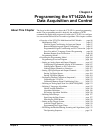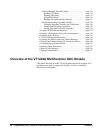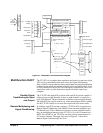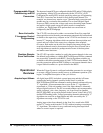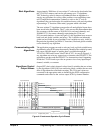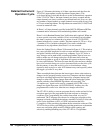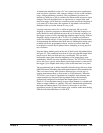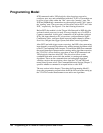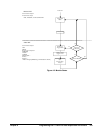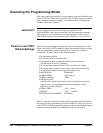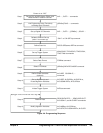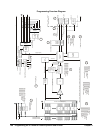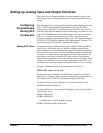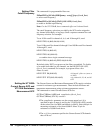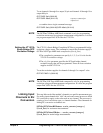
102 Programming the VT1422A for Data Acquisition and Control Chapter 4
Programming Model
SCPI commands and/or VXIplug&play driver functions are used to
configure, start, stop, and communicate with the VT1422A. The module can
be in one of two states: either the "idle" state or the "running" state. The
INITiate[:IMMediate] command moves the module from the "idle" state to
the "running" state. These two states will be called "before INIT" and "after
INIT," respectively. See Figure 4-3 for the following discussion.
Before INIT, the module is in the Trigger Idle State and its DSP chip (the
on-board control processor) is ready to accept virtually any of its SCPI or
Common commands. At this point, commands will be sent that configure
SCPs, link input channels to EU conversions, configure Remote Signal
Conditioning Units, configure digital input and output channels, define a
Scan List, configure the trigger system, and define control algorithms.
After INIT (and with trigger events occurring), the DSP is busy measuring
input channels, executing algorithm code, sending internal algorithm values
to the CVT and updating control outputs. To insulate the DSP from commands
that would interrupt its measurement scanning and/or algorithm execution,
the VT1422A’s driver disallows execution of most SCPI commands and
VXIplug&play functions after INIT. The driver does allow certain
commands that make sense while the module is scanning and running
algorithms. These are the commands that read and update algorithm
variables, retrieve data acquisition values from the CVT and FIFO and
return Status System values. The Command Reference Section (Chapter 7)
specifies whether a command is accepted before or after INIT.
The next section in this chapter ("Executing the Programming Model"),
shows the programming sequence that should be followed when setting up
the VT1422A to make measurement scans and/or run algorithms.




